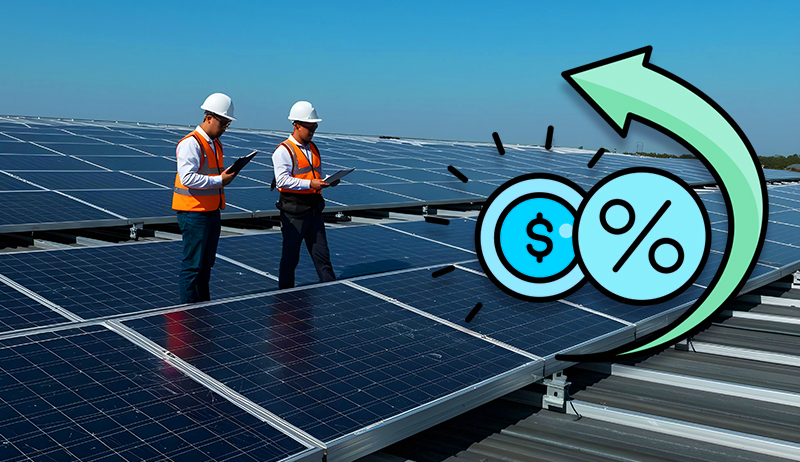Electric Vehicle
Canada’s journey towards electric mobility
Canada, known for its stunning landscapes and commitment to environmental stewardship, is embracing the transition to electric vehicles (EVs) as a key solution to combat climate change and reduce greenhouse gas emissions.
With vast natural resources, a growing charging infrastructure, and supportive government policies, Canada is driving towards a greener future.
In this article, we explore Canada’s journey towards electric mobility, examine the driving factors behind its success, and discuss the environmental and economic benefits of electric vehicles in the country.
Government Support and Incentives:
The Canadian government has demonstrated a strong commitment to electric vehicles through supportive policies and incentives. Federal and provincial governments provide financial incentives, such as rebates and tax credits, to encourage consumers to purchase electric vehicles. Additionally, the government has invested in the expansion of charging infrastructure across the country, making EV charging more accessible and convenient for Canadians.
These initiatives aim to accelerate the adoption of electric vehicles and drive the transition towards a low-carbon transportation system.
Expanding Charging Infrastructure:
Canada is rapidly expanding its charging infrastructure to support the growing number of electric vehicles on its roads. Public charging stations can be found in urban centers, parking lots, and along major highways, ensuring that EV owners have convenient access to charging facilities. The government is also investing in the development of fast-charging networks, enabling longer trips and reducing range anxiety. Moreover, initiatives are underway to integrate charging infrastructure with renewable energy sources, promoting a greener charging ecosystem.
Environmental Benefits and Climate Action:
The adoption of electric vehicles in Canada brings significant environmental benefits, particularly in reducing greenhouse gas emissions and improving air quality. EVs produce zero tailpipe emissions, resulting in a substantial reduction in carbon dioxide and air pollutants compared to traditional combustion engine vehicles. By transitioning to electric mobility, Canada can make significant strides towards meeting its climate targets and contributing to global efforts to mitigate climate change. The integration of renewable energy sources in charging infrastructure further enhances the environmental advantages of electric vehicles.
Advancements in Technology and Domestic Manufacturing:
Canada is making significant strides in technological advancements and domestic manufacturing of electric vehicles. Canadian companies, including automakers and battery manufacturers, are investing in research and development to produce high-quality electric vehicles with improved range and performance. The country’s expertise in clean energy technologies and sustainable manufacturing practices positions it as a competitive player in the global electric vehicle market. Moreover, collaborations between industry, academia, and government entities foster innovation and drive the development of cutting-edge electric vehicle technologies.
Economic Opportunities and Job Creation:
The transition to electric vehicles presents significant economic opportunities for Canada. The growth of the electric vehicle industry stimulates job creation and supports economic development. Domestic manufacturing of electric vehicles and components contributes to the creation of skilled jobs in manufacturing plants, research facilities, and supply chains. Furthermore, the expansion of the charging infrastructure sector, along with the development of clean energy technologies, fosters a robust and sustainable green economy, positioning Canada as a leader in the emerging electric mobility market.
Future of Electric Vehicles in Canada
The future of electric vehicles (EVs) in Canada is poised for significant growth and development. As the world shifts towards sustainable transportation and reduced carbon emissions, Canada is taking strides to embrace electric mobility. Several factors contribute to a promising future for EVs in Canada.
Firstly, the Canadian government has implemented ambitious policies and incentives to promote the adoption of electric vehicles. These initiatives include purchase rebates, tax incentives, and investments in charging infrastructure. Such measures encourage consumers to choose electric vehicles over conventional gasoline-powered cars, making EVs more accessible and affordable.
Secondly, the automotive industry is investing heavily in the development and production of electric vehicles. Many major automakers are introducing new electric models to the Canadian market, offering a wider range of options for consumers. With advancements in battery technology and increased manufacturing capabilities, EVs are becoming more appealing in terms of performance, range, and charging speed.
Additionally, Canada possesses abundant renewable energy resources, such as hydroelectric power, which can support the charging infrastructure for electric vehicles. As the charging network expands and becomes more reliable, range anxiety, a common concern for EV owners, will diminish, further encouraging the adoption of electric vehicles.
Lastly, public awareness and acceptance of the environmental benefits associated with electric vehicles are growing in Canada. With increasing concerns about climate change and air pollution, many Canadians are recognizing the importance of transitioning to cleaner transportation alternatives. The cultural shift towards sustainability and the desire to reduce carbon footprints will undoubtedly contribute to a higher demand for electric vehicles.
The future of electric vehicles in Canada looks promising. With supportive government policies, industry investments, renewable energy resources, and changing consumer attitudes, the adoption of electric vehicles is expected to surge in the coming years. This shift towards electric mobility will not only reduce greenhouse gas emissions but also contribute to a more sustainable and environmentally friendly transportation system for Canada.
Fact and Data of Electric Vehicle in Canada
1. Adoption and Sales:
– By 2021, there were over 175,000 electric vehicles on Canadian roads, representing a significant increase compared to previous years.
– In 2020, despite the challenges posed by the COVID-19 pandemic, electric vehicle sales in Canada increased by 75% compared to 2019.
– British Columbia and Quebec are the leading provinces in terms of electric vehicle adoption, accounting for the majority of EV sales in Canada.
2. Government Incentives:
– The Canadian federal government offers a purchase incentive of up to $5,000 for eligible electric vehicles through the iZEV program (Incentives for Zero-Emission Vehicles).
– Several provincial governments also provide additional incentives and rebates, such as Ontario’s Electric Vehicle Incentive Program and Quebec’s Drive Electric Program, further reducing the cost of electric vehicles.
3. Charging Infrastructure:
– Canada has been expanding its electric vehicle charging infrastructure rapidly. As of 2021, there were over 7,500 public charging stations across the country.
– The federal government has announced investments of up to $130 million to develop a coast-to-coast fast-charging network, enabling long-distance travel for electric vehicle owners.
4. Automaker Commitments:
– Major automakers, including Tesla, Nissan, Chevrolet, and Hyundai, offer a range of electric vehicle models in Canada. The availability and variety of electric vehicles have been increasing over time.
– Many automakers have committed to transitioning towards electric vehicle production globally, with Canada being a part of their plans. For example, Ford announced that it will be investing $1.8 billion to build electric vehicles in Ontario.
5. Environmental Impact:
– The adoption of electric vehicles in Canada contributes to reduced greenhouse gas emissions and improved air quality. EVs produce zero tailpipe emissions, reducing the environmental impact of transportation.
– The Canadian government aims to achieve 100% zero-emission vehicle sales by 2040, aligning with global efforts to combat climate change.
These facts and data highlight the growing presence of electric vehicles in Canada, driven by government support, increasing charging infrastructure, and consumer demand for sustainable transportation options. The upward trend in electric vehicle adoption is expected to continue as technology advances and more Canadians embrace the benefits of electric mobility.
“Canada’s commitment to electric vehicles marks a pivotal step towards a cleaner, greener future”.
Conclusion Future of Electric Vehicles in Canada
Through supportive government policies, investments in charging infrastructure, advancements in technology, and domestic manufacturing capabilities, Canada is driving the transition towards sustainable transportation.
The environmental benefits, improved air quality, and economic opportunities presented by electric vehicles position Canada at the forefront of the global electric mobility revolution. As the country continues to embrace electric vehicles and accelerate its efforts to reduce carbon emissions, Canada sets an inspiring example for other nations worldwide to follow in the pursuit of a sustainable and low-carbon transportation future.
https://www.exaputra.com/2023/07/future-of-electric-vehicles-in-canada.html
Renewable Energy
ACORE Applauds Maryland Gov. Moore’s New Executive Order on Energy Affordability and Reliability
-
Grid Infrastructure -
Policy -
Siting & Permitting Reform -
Technology -
Press Releases
ACORE Applauds Maryland Gov. Moore’s New Executive Order on Energy Affordability and Reliability
ACORE Applauds Maryland Gov. Moore’s New Executive Order on Energy Affordability and Reliability
FOR IMMEDIATE RELEASE
Dec. 19, 2025
WASHINGTON, D.C. — The American Council on Renewable Energy (ACORE) issued the following statement from ACORE President and CEO Ray Long in response to Governor Wes Moore’s announcement of new initiatives to build an affordable and reliable energy future for Maryland.
“ACORE applauds Gov. Wes Moore for setting forth a new series of energy initiatives that seek to stabilize energy bills while ensuring grid reliability and efficiency for Marylanders. In particular, ACORE commends key provisions in the order to increase the deployment of advanced transmission technologies; streamline the siting and permitting of high-voltage transmission, energy storage, and other infrastructure; advance wholesale market reforms; and more. As the country enters a new era of electricity demand, initiatives like Gov. Moore’s will facilitate significant progress toward building a modern and reliable grid needed to maintain economic competitiveness and keep the lights on,” said ACORE President and CEO Ray Long.
###
ABOUT ACORE
For over 20 years, the American Council on Renewable Energy (ACORE) has been the nation’s leading voice on the issues most essential to clean energy expansion. ACORE unites finance, policy, and technology to accelerate the transition to a clean energy economy.
For more information, please visit http://www.acore.org.
Media Contacts:
Stephanie Genco
Senior Vice President, Communications
American Council on Renewable Energy
communications@acore.org
The post ACORE Applauds Maryland Gov. Moore’s New Executive Order on Energy Affordability and Reliability appeared first on ACORE.
https://acore.org/news/acore-statement-on-gov-wes-moores-new-energy-executive-order/
Renewable Energy
Meat–It’s What’s for Dinner, if You Don’t Care about the Animals or the Planet
 We often hear meat-eaters say things like, “If beef isn’t good, why do the manufacturers of plant-based burgers try so hard to make their burgers taste like real meat?”
We often hear meat-eaters say things like, “If beef isn’t good, why do the manufacturers of plant-based burgers try so hard to make their burgers taste like real meat?”
There is no doubt that cow and pig meat tastes and smells great; every vegan on Earth will tell you that.
The problem lies elsewhere, in a) the environmental impact of clearing the rainforests to make room for more cows, and b) the cruelty inherent in factory farming and the slaughtering of the animals.
Meat–It’s What’s for Dinner, if You Don’t Care about the Animals or the Planet
Renewable Energy
FAQs: Your Most Common Commercial Solar Questions Answered
The post FAQs: Your Most Common Commercial Solar Questions Answered appeared first on Cyanergy.
https://cyanergy.com.au/blog/faqs-your-most-common-commercial-solar-questions-answered/
-
Climate Change4 months ago
Guest post: Why China is still building new coal – and when it might stop
-
Greenhouse Gases4 months ago
Guest post: Why China is still building new coal – and when it might stop
-
Climate Change2 years ago
Spanish-language misinformation on renewable energy spreads online, report shows
-

 Greenhouse Gases2 years ago
Greenhouse Gases2 years ago嘉宾来稿:满足中国增长的用电需求 光伏加储能“比新建煤电更实惠”
-
Climate Change Videos2 years ago
The toxic gas flares fuelling Nigeria’s climate change – BBC News
-

 Climate Change2 years ago
Climate Change2 years ago嘉宾来稿:满足中国增长的用电需求 光伏加储能“比新建煤电更实惠”
-

 Carbon Footprint2 years ago
Carbon Footprint2 years agoUS SEC’s Climate Disclosure Rules Spur Renewed Interest in Carbon Credits
-
Climate Change2 years ago
Why airlines are perfect targets for anti-greenwashing legal action










 Full energy assessment
Full energy assessment



